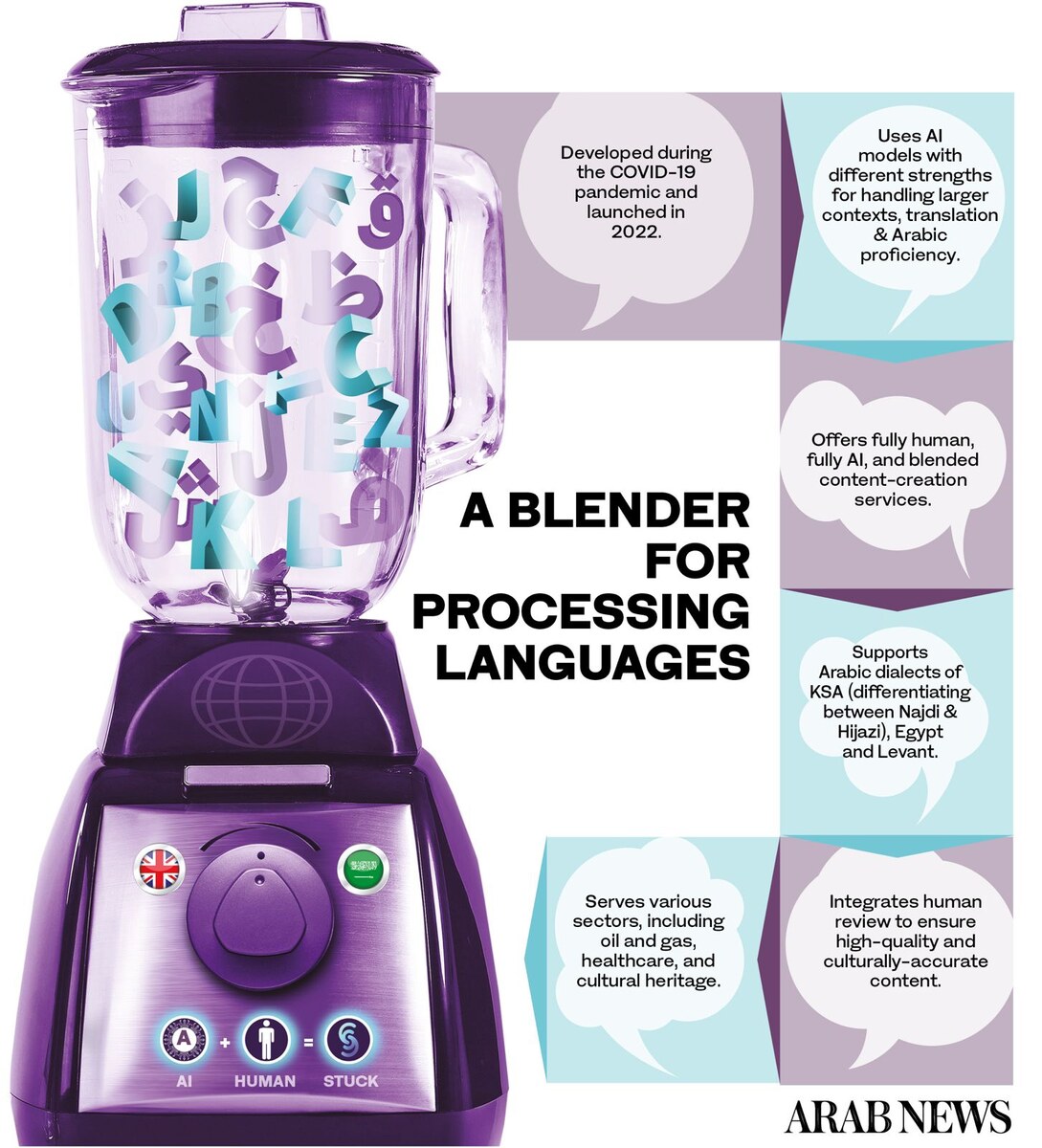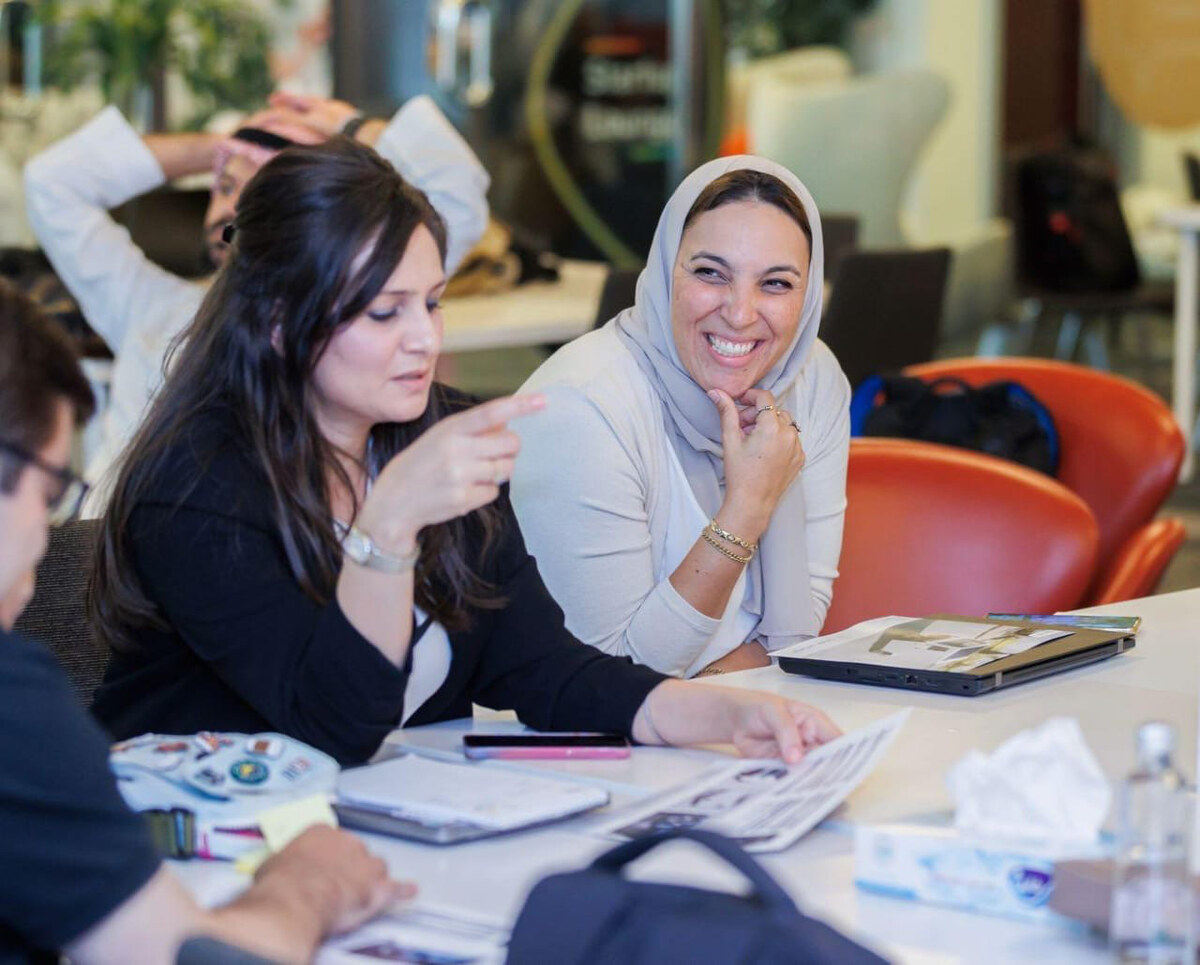JEDDAH: In the fast-paced world of content creation, artificial intelligence is reshaping industries and how we communicate.
Yet while AI excels in speed and scale, human insight is still critical for capturing cultural context and linguistic nuance — especially in regions like the Middle East, where dialects and cultural subtleties matter.
This is where STUCK?, a groundbreaking platform created by Asmaa Naga, comes into play, combining the raw power of AI-driven large language models with the nuanced understanding of human experts to create accurate, high-quality content in English and Arabic.

“During COVID, I began to see how my experience in language and my awareness of corporate linguistic needs could help me create a solution to bridge a gap,” Naga, who taught at the British Council in Jeddah for 11 years prior to launching the platform, told Arab News.
Established in 2022, STUCK? employs a group of language models, each specializing in different aspects of language processing.
“One model is designed to handle large contexts, another excels in translation, while another has exceptional proficiency in understanding Arabic,” said Naga.
AI’s ability to quickly analyze massive datasets and generate content has already revolutionized whole sectors. However, there is still a catch. While AI is excellent at processing language, it often lacks the emotional intelligence and cultural depth only humans can provide.
DID YOUKNOW?
Content creation is evolving, with AI enhancing speed while human oversight ensures relevance and contextual accuracy in specialized sectors.
AI-driven content creation offers scalability and efficiency but still requires human expertise for cultural sensitivity and nuanced language.
Arabic language models require specialized development to handle dialects, cultural contexts and industry-specific terminology.
This is especially crucial in regions where subtle differences in dialect, phrasing or cultural references can dramatically change the meaning or tone of a message.
STUCK? was designed with these challenges in mind. The platform combines multiple AI models, each specialized in different areas such as translation or contextual understanding, to offer a comprehensive solution for creating and localizing content.

Stuck? founder and CEO Asmaa Naga (right) and fellow founder. (Supplied)
But what truly sets STUCK? apart is its ability to handle not just Modern Standard Arabic but also regional dialects, including Levantine, Egyptian and those spoken within Saudi Arabia such as Najdi and Hijazi.
AI-generated content in English or any other widely spoken language has become more advanced over the years, but Arabic — especially its regional dialects — presents unique challenges. It has numerous dialects that vary not only by country but even within regions of a single nation.
For instance, the Arabic spoken in Riyadh differs from that spoken in Jeddah, and that is just within Saudi Arabia. This complexity makes it difficult for standard language models to capture differences accurately.
For industries operating in the Middle East, from healthcare and cultural heritage to oil and gas, accurate communication in the correct dialect can be the difference between success and failure.
But despite the technology’s sophistication, the team behind STUCK? recognize that AI alone cannot fully meet the demands of complex content creation. This is why the platform offers three service tiers — fully human, fully AI, and a blended approach that combines the two.
For routine tasks, AI or the blended model offers quick and efficient solutions. But for high-stakes projects that require a more refined touch — such as marketing campaigns or culturally sensitive communications — the human approach ensures the content resonates with the target audience.

“Users generally do not need guidance to make this choice,” said Naga. “They usually know the importance of the content they want to create or translate and the level of customization needed.”
This flexibility makes STUCK? a highly adaptable tool. In the oil and gas sector, for example, where terminology is highly specialized, the platform’s ability to onboard industry-specific language experts ensures accuracy.
Indeed, it is not just about translating words — it is about making sure the content speaks the industry’s language in both the literal and figurative sense.
AI models are continuously trained and fine-tuned to generate content that responds appropriately to user prompts. But the process does not end with AI generation — human editors review the AI-produced content to ensure it aligns with cultural and linguistic standards.
“We constantly train and fine-tune our AI models to ensure they generate content that is highly responsive to the prompts used,” said Naga.
With clients like the Riyadh-based consultancy &bouqu, STUCK? has already established itself as a critical tool for businesses looking to scale operations in the Middle East.
By offering a blend of AI speed and human creativity, the platform is poised to become an indispensable asset for companies that need to communicate effectively across the region’s diverse linguistic landscape.
Looking forward, Naga envisions STUCK? becoming “the go-to solution for all companies interested in expanding to or operating in the Middle East.”
In a world where content is king, STUCK? is not just filling a gap — it is arguably redefining how companies create, translate, and localize content in one of the world’s most linguistically and culturally diverse regions.
By merging the precision of AI with the insight of human experts, STUCK? could offer a way forward for industries that are often literally stuck when it comes to communication.


































